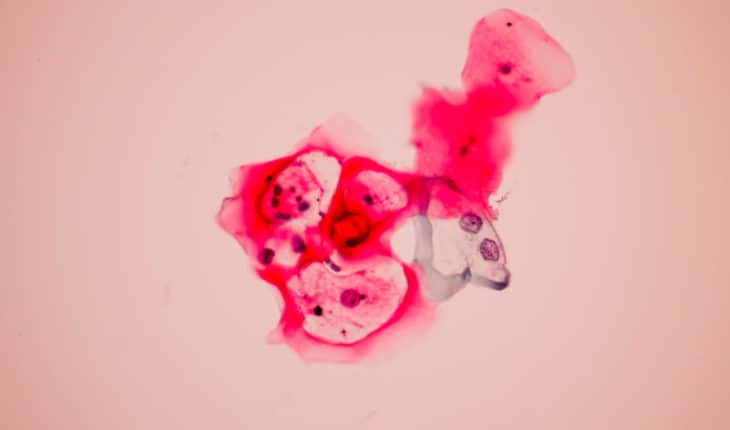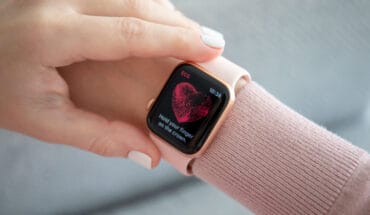Cervical cancer rates set to double among over 50s over next 20 years: A new model, commissioned by Jo’s Cervical Cancer Trust, has found that rates of cervical cancer are set to rocket among older age groups. While HPV vaccination has led to plummeting cases among younger age groups, both diagnoses and mortality are set to increase in the over 50s over the next 20 years.
The model, developed by researchers at King’s College London, shows where the impact of cervical cancer is going to fall over the coming years and how screening and vaccination rates will affect it. It focuses on England where there are currently 2,626 cases a year and 701 deaths[1]. Cases are currently highest among those aged 30-34.
Those aged 60-64 in 2041-45 are set to face a 70% increase in cervical cancer rates, rising from 10.1 to 17.2 per 100,000 population.
Cervical screening coverage has been in decline across the UK, with Scotland (the first UK country to release data from the past year) reporting a 1.9% drop in screening coverage over the past year[2]. If coverage were to continually fall and drop 2.5%, cancer rates among those aged 60-64 could climb as high as 18.2.
The 17th November marks one year since the World Health Organization (WHO) launched their global call for action to eliminate cervical cancer[3]. Jo’s Cervical Cancer Trust is joining the WHO and calling on governments across the UK to commit to eliminating cervical cancer. The charity warns that lack of urgency will lead to cases of cervical cancer that could have been prevented.
The model shows the following scenarios among age groups who have not benefited from the HPV vaccination:
· Deaths to double, including rates among 60-64 year olds increasing from 3.0 to 7.4 per 100,000 population and from 4.1 to 9.6 for 65-70 year olds
· An increase in later stage diagnoses among these ages with stage 3+ almost doubling from 3.6 to 5.6 per 100,000, leading to more invasive treatment and increased risk of death
· Those aged 75-79 will see mortality rise from 6.7 to just 11.4 per 100,000 in 2036-40 and remaining high at 8.0 in 2041-45.
Earlier this month it was announced that the HPV vaccination has dramatically reduced cervical cancer cases[4] in young women. A more effective vaccination preventing against even more HPV strains is to replace the current vaccine in during 2021-22.
As a result, rate of new diagnoses among those aged 25-29 will fall from 17.1 to just 5.0 per 100,000 in 2041-45. Deaths will almost be removed (rate of 0.3-0.4). The same is seen among 35-39 year olds with cases falling from 20.0 to 10.0 per 100,000.
The model demonstrates the importance of maintaining high vaccination uptake, as if it were to decline from the current coverage of 86%, for example to 70%, then by 2041-45 cancer rates in 25-29 year olds could double and be higher at 9.6.
Samantha Dixon, Chief Executive, Jo’s Cervical Cancer Trust: “It is so exciting to have eliminating a cancer within our sights. We have the tools to do so with vaccination and screening, but we have a mountain to climb on the way there. Now is not the time for complacency. We urge governments to put cervical cancer elimination in their strategies and to invest in the resources and technology to reduce inequalities and ensure we are providing the most effective programmes possible.”
The charity is starting on the development of a new five year strategy with elimination at the heart of it.
Zoe Edwards was diagnosed with cervical cancer this year: “To be told you have cervical cancer at 28 with the possibility of a hysterectomy is terrifying, and going through this experience during a pandemic was really hard. Thankfully my cancer was caught early giving me the chance to continue being a Mum and I hope that I can have another baby one day. I know many don’t have this choice. I want to see a future where we can wipe out cervical cancer so that no one has to go through what I did. Governments need to do all they can to make this a reality. What the HPV vaccine can do is incredible and when my son is old enough I’ll make sure he has it, I urge parents to find out what they need to know about it so the next generation is protected as much as possible”
Dr Edward Morris, President of the Royal College of Obstetricians and Gynaecologists, said: “It is so positive to see such a huge impact from the HPV vaccination programme in England, with a recent study showing that since it started cervical cancer rates in women have dropped significantly.
What we must not forget however is that there are many women and people out there who didn’t receive the vaccine. It’s crucial that while the HPV vaccination programme is making huge leaps to eradicate cervical cancer, the UK Government continues to invest in cervical screening and promote its importance.”
[1] https://www.cancerresearchuk.org/health-professional/cancer-statistics/statistics-by-cancer-type/cervical-cancer/mortality
2 https://publichealthscotland.scot/media/9538/2021-10-05-cervical-screening-report.pdf
3 https://www.who.int/publications/i/item/9789240014107
4 https://www.bbc.co.uk/news/health-59148620
· Jo’s Cervical Cancer Trust is the UK’s leading cervical cancer charity. We are here for everyone who needs us, for as long as they need us but we won’t stop until the day that cervical cancer is no more. Cervical cancer can be devastating but we’re here to reduce the impact. We provide trustworthy information, campaign for change and provide support at every step.
· The model was created by combining results from population modelling of incidence trends, observed individual level screening data, and microsimulation of unobservable disease states (i.e. impact of vaccination). It allows for modelling of the impact of changing vaccination and screening uptake on cervical cancer incidence and mortality by age group over 5 year periods. It was updated for Jo’s Cervical Cancer Trust in 2020. Full reference for methods: https://pubmed.ncbi.nlm.nih.gov/29307386/
· In 2041-45 no women aged over 52 will have received the vaccination so there will be little but limited effect in those aged 50-51.
· All diagnosis and mortality figures are averages for the 5 year period and the current rate of diagnoses used for comparison is the average for 2016-2018.
· Figures are averages over five years so COVID disruptions to programmes are unlikely to make a significant impact as they are short term and the model assumes changes remain for years.
· Cervical screening coverage uses 2018/19 data which is 71.9% and vaccination coverage of 86%.
- New lipid-based pathway discovered as key to memory formation - 25th June 2025
- Crucial link could explain how Alzheimer’s takes hold - 25th June 2025
- Understanding Your Mind Can Improve Daily Life - 25th June 2025







